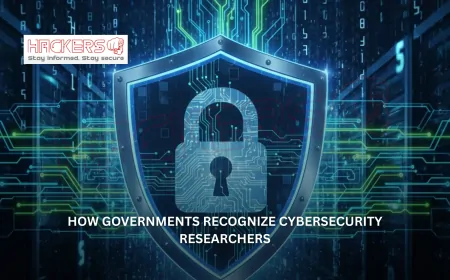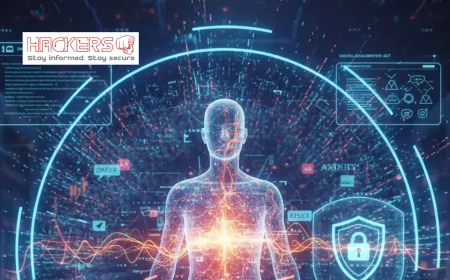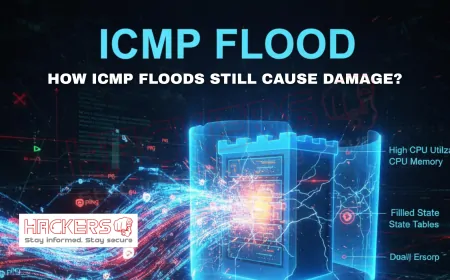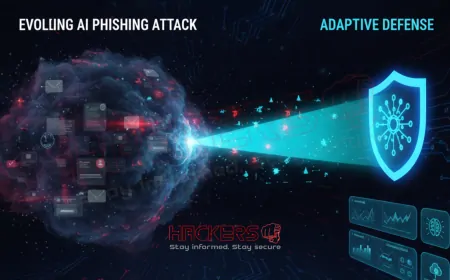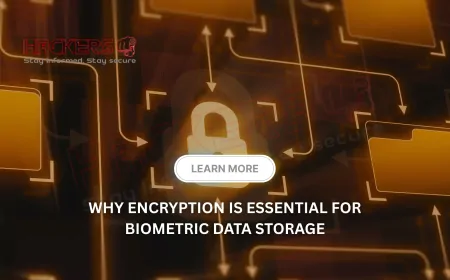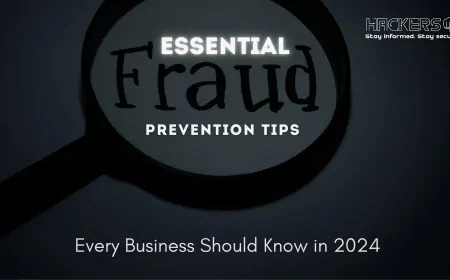What Are the Aspects of Cybersecurity in Research-Based Work?
Imagine spending five years in a lab, perfecting a new drug that could save millions of lives. One morning, you open your computer and everything is gone. Your data, your notes, your formulas. A hacker from halfway across the world now owns your life’s work. Or picture a team of climate scientists whose supercomputer models predict rising sea levels. Their findings disappear overnight because someone clicked a fake email link. This isn’t science fiction. It’s the reality of modern research. Today, research isn’t just test tubes and chalkboards. It’s terabytes of data, cloud storage, global collaboration, and powerful computers. And where there’s valuable information, there are threats. Cybersecurity in research isn’t optional. It’s survival. In this blog post, we’ll explore the key aspects of keeping research safe: from protecting ideas to publishing results. Whether you’re a student, professor, lab manager, or funding agency, this guide will help you understand what’s at stake and how to stay secure. Let’s protect the future of discovery.

Table of Contents
- Why Research Is a Prime Target for Cyberattacks
- Aspect 1: Protecting Sensitive Research Data
- Aspect 2: Safeguarding Intellectual Property (IP)
- Aspect 3: Secure Collaboration and File Sharing
- Aspect 4: Securing Lab Devices and IoT Equipment
- Aspect 5: Safe Publishing and Open Science
- Aspect 6: Meeting Legal and Ethical Compliance
- Aspect 7: Cybersecurity in Grant Proposals and Funding
- Aspect 8: Training Researchers and Staff
- Aspect 9: Incident Response and Recovery
- Traditional vs. Secure Research Practices
- The Future of Cybersecurity in Research
- Conclusion: Security Enables Breakthroughs
- Frequently Asked Questions
Why Research Is a Prime Target for Cyberattacks
Research holds treasure. Drug formulas, defense tech, climate models, AI algorithms. These are worth billions. Nation-states, corporations, and criminals want them.
Why research is vulnerable:
- High-value data with low security budgets
- Open culture: sharing is encouraged
- Global teams using email, cloud, and USB drives
- Old lab equipment running outdated software
- Researchers focused on discovery, not defense
A 2024 report showed 63 percent of universities faced ransomware. Average cost: $4.5 million. Security isn’t a burden. It’s a requirement.
Aspect 1: Protecting Sensitive Research Data
Data is the heart of research. Lose it, and years vanish.
Key practices:
- Encryption: Lock files at rest (on disk) and in transit (email, cloud). Use AES-256.
- Access Control: Only authorized people see data. Use passwords, biometrics, or keys.
- Backups: 3-2-1 rule: 3 copies, 2 media types, 1 offsite. Test restores monthly.
- Version Control: Tools like Git track changes. Prevent accidental overwrites.
- Data Classification: Label data: public, internal, confidential, top secret.
Example: A cancer lab stores patient genomes. They encrypt drives, limit access to three scientists, and back up nightly to a secure cloud.
Aspect 2: Safeguarding Intellectual Property (IP)
IP is your idea, patented or not. Steal it, and competitors win.
Protection steps:
- Non-Disclosure Agreements (NDAs): Sign before sharing with partners.
- Watermarking: Add hidden tags to documents and images.
- Secure Repositories: Use platforms like Figshare or institutional servers, not Dropbox.
- Patent First: File provisional patents before publishing.
- Monitor Leaks: Use tools like Google Alerts or Have I Been Pwned.
IP theft costs research institutions $500 billion yearly. One leak can kill a startup spin-off.
Aspect 3: Secure Collaboration and File Sharing
Research is global. So are the risks.
Safe tools and habits:
- Use Institutional Platforms: University OneDrive, Google Workspace for Education.
- Avoid Personal Email: Never send data via Gmail or Yahoo.
- Enable 2FA: Two-factor authentication on all accounts.
- Secure Video Calls: Use Zoom with passwords, waiting rooms, end-to-end encryption.
- Share Links, Not Files: Set expiration and password protection.
Phishing is the #1 attack vector. One fake login page can expose an entire project.
Aspect 4: Securing Lab Devices and IoT Equipment
Modern labs are full of connected gear: sequencers, microscopes, sensors.
Security tips:
- Segment Networks: Put lab devices on a separate VLAN.
- Update Firmware: Patch sequencers, robots, and cameras.
- Disable Unused Ports: Block USB, Bluetooth if not needed.
- Physical Locks: Secure server rooms and equipment cabinets.
- Monitor Traffic: Use tools like Zeek or Suricata to watch lab networks.
A hacked DNA sequencer once altered results in a biotech lab. The fix? Network isolation.
Aspect 5: Safe Publishing and Open Science
Open science is good. Blind sharing is not.
Best practices:
- Pre-Publication Review: Remove sensitive metadata from files.
- Use Reputable Journals: Avoid predatory publishers that leak data.
- Embargo Results: Delay full data release until patents are filed.
- Redact Sensitive Info: Blur lab locations, patient names, proprietary methods.
- Secure Preprint Servers: Use arXiv, bioRxiv with institutional login.
Open data is powerful. Secure open data changes the world safely.
Aspect 6: Meeting Legal and Ethical Compliance
Research must follow rules. Break them, lose funding.
Key regulations:
- GDPR (EU): Consent for personal data. Fines up to 4% of budget.
- HIPAA (US): Protect health data in medical research.
- FERPA (US): Secure student data in education studies.
- ITAR/EAR (US): Control export of defense-related research.
- NIH, NSF Policies: Require data management and security plans.
Compliance isn’t red tape. It’s trust.
Aspect 7: Cybersecurity in Grant Proposals and Funding
Funders now demand security.
What to include:
- Data Management Plan (DMP): How you’ll store, share, and secure data.
- Budget for Security: Tools, training, cloud costs.
- Risk Assessment: Identify threats and mitigation steps.
- Third-Party Audits: Annual penetration tests or certifications.
NSF rejected 12 percent of 2024 proposals for weak cybersecurity plans.
Aspect 8: Training Researchers and Staff
Humans are the weakest link. Train them to be the strongest.
Training topics:
- Phishing recognition
- Password hygiene
- Safe file handling
- Incident reporting
- Device security
Run monthly 15-minute sessions. Use real examples. Make it stick.
Aspect 9: Incident Response and Recovery
Breaches happen. Be ready.
Build a plan:
- Detect: Monitor logs, use intrusion detection.
- Contain: Isolate affected systems.
- Eradicate: Remove malware, close vulnerabilities.
- Recover: Restore from backups, test functionality.
- Learn: Document what went wrong and fix it.
Test the plan yearly. Time matters. One hour of delay = $1M in damage.
Key Insight: Security doesn’t slow research. It enables it. A secure lab publishes faster, collaborates freely, and attracts funding.
Traditional vs. Secure Research Practices
See the difference:
| Practice | Traditional | Secure | Impact |
|---|---|---|---|
| Data Storage | USB, personal laptop | Encrypted cloud, access control | Prevents leaks |
| Collaboration | Email attachments | Secure links, 2FA | Stops phishing |
| Lab Devices | Default settings | Patched, segmented | Blocks ransomware |
| Publishing | Full data dump | Redacted, embargoed | Protects IP |
Secure practices add minutes. They save years.
The Future of Cybersecurity in Research
Tomorrow brings new tools and threats:
- AI-Powered Defense: Auto-detect anomalies in lab data.
- Zero Trust Research: Verify every user, device, and request.
- Quantum Encryption: Unbreakable protection for sensitive data.
- Blockchain for Provenance: Track who accessed what and when.
- Mandatory Security Standards: Funders require ISO 27001 or NIST 800-171.
The labs that adapt will lead. The ones that don’t will vanish.
Conclusion: Security Enables Breakthroughs
Research is about pushing boundaries. Cybersecurity is about protecting them. From raw data to published papers, every step needs protection. Encrypt your files. Secure your lab. Train your team. Plan for breaches. Meet compliance. Write security into grants. These aren’t distractions. They’re the foundation of trustworthy science. A secure research environment attracts talent, funding, and partners. It lets you focus on discovery, not defense. The next breakthrough in medicine, energy, or space won’t come from a hacked laptop. It will come from a lab that values security as much as innovation. Start today. Audit your data. Update your devices. Train one person. Small steps build unbreakable systems. The future of research is bright. Keep it secure.
Frequently Asked Questions
Why is research data so valuable to hackers?
It contains drug formulas, defense tech, patient records, and trade secrets worth billions.
Do I need to encrypt all research files?
Yes, especially if they contain personal, health, or proprietary data.
Can I use Gmail for research collaboration?
No. Use institutional email or approved platforms with encryption and 2FA.
What is a data management plan?
A document that explains how you’ll collect, store, share, and secure research data.
Should lab equipment be on the internet?
Only if necessary. Use air-gapped or segmented networks when possible.
Is open science safe?
Yes, if you redact sensitive info, use secure platforms, and embargo IP.
Do students need cybersecurity training?
Absolutely. They handle data, use devices, and are prime phishing targets.
What happens if I lose research data?
You may lose years of work, funding, and credibility. Backups prevent this.
Are USB drives safe for research?
No. Use encrypted, approved drives. Cloud with access control is better.
Does my university have a cybersecurity team?
Most do. Contact IT security or the research office for help.
Can I publish data before patenting?
No. It may block your patent. File first or use NDAs.
What is ransomware in research?
Malware that locks your data until you pay. Backups and updates stop it.
Do funders check cybersecurity?
Yes. NIH, NSF, and EU grants now require security plans and budgets.
Is Zoom safe for research meetings?
Yes, with passwords, waiting rooms, and end-to-end encryption enabled.
Should I watermark research PDFs?
Yes. It deters leaks and helps track unauthorized sharing.
What is zero trust in research?
Never assume trust. Verify every user and device, every time.
Can I recover from a research data breach?
Yes, with backups, a response plan, and quick action. Prevention is better.
Are cloud platforms safe for research?
Yes, if you use approved, encrypted, institutional accounts like AWS GovCloud.
Do I need antivirus on lab computers?
Yes. Even macOS and Linux need protection. Use enterprise-grade tools.
How can I start improving research security today?
Enable 2FA, back up data, change default passwords, and train one person.
What's Your Reaction?







